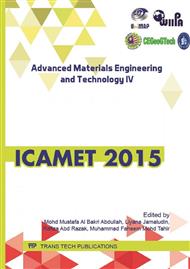p.560
p.565
p.573
p.578
p.583
p.590
p.598
p.603
p.608
Optimization of Output Coupling Ratio for Multi-Wavelength Brillouin Fiber Laser Employing FBG and DCF as Gain Medium
Abstract:
A ring-cavity multi-wavelength Brillouin fiber laser by employing a fiber Bragg grating and dispersion compensating fiber was experimentally demonstrated. The multi-wavelength Brillouin fiber laser has been analyzed at different output coupling ratios at 1550 nm of Brillouin pump wavelength. A ring-cavity multi-wavelength Brillouin fiber laser has been designed with a 16 km long of dispersion compensating fiber which acts as gain medium for stimulated Brillouin scattering effect. Dispersion compensating fiber is designed to have small core size and has higher nonlinear coefficient. As a result, 8 Brillouin Stokes signals were produced at maximum Brillouin power of 21 dBm and output coupling ratio of 80%. The best performance of output coupling ratio was determined by 70% with the highest of signal to noise ratio at 38.39 dB.
Info:
Periodical:
Pages:
608-612
Citation:
Online since:
May 2016
Price:
Сopyright:
© 2016 Trans Tech Publications Ltd. All Rights Reserved
Share:
Citation:


